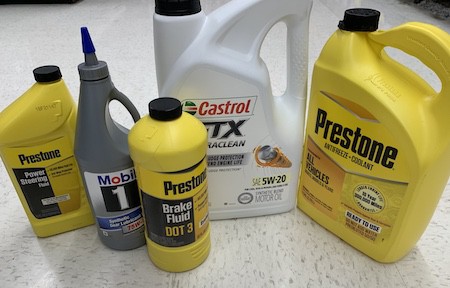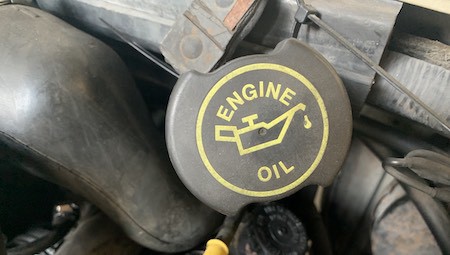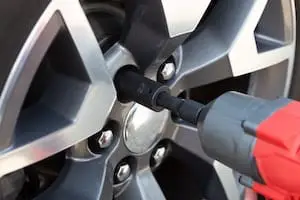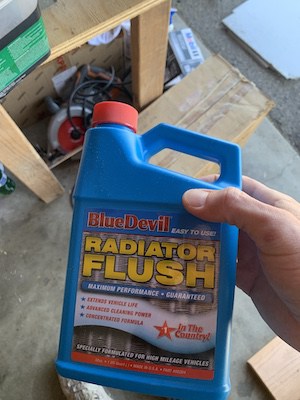Stop spending money taking your car to the dealership or mechanic shop when the majority of the “maintenance” that they are doing is checking, replacing, and topping off your vehicles fluids. Cars can seem complicated though, but step by step we will go over the major fluids in your vehicle and ensure that you are checking all the right fluids to keep your car running.
What fluids to check in a car?
The primary fluids that should be checked frequently are: engine oil, brake fluid, and radiator fluid. Secondary fluids that need to be checked less frequently are: transmission fluid, gear oil, power steering fluid, and wiper fluid. Neglecting changing one of these fluids can be catastrophic and should be regularly inspected by the car owner.

Changing car fluids or topping them off is actually a bit trickier than it seems. This is why mechanics charge so much, but it is not that difficult and if you know how to open the hood of your car, then you can handle maintaining car fluids. It is something every car needs so let’s go over the best tips to make it as easy as possible!
Checking Your Primary Car Fluids
Car Fluids that require changing or topping off are categorized in two groups. The primary group is engine oil, brake fluid, and radiator fluid. These are the most critical fluids. The secondary group of fluids are also important but generally require less attention and includes transmission fluid, gear oil, power steering fluid, and wiper fluid.
Taking your car to a mechanic does not mean they will maintain all of the fluids properly. Often fluids are overlooked and a car owner must be aware of them in order to not cause damage to the vehicle.
Some fluids can be tricky to check and car shops often do not do a good job at ensuring that a fluid is maintained properly. Check it yourself to be sure no damage is done to your car.
Checking car fluids yourself allows you to quit taking your car to the dealership once a month! You can maintain your car’s fluids to save you money, and give you peace of mind that your car will be reliable. Then you should be taking car in every 6 months to the dealership to inspect other mechanical components such as brakes and steering.
For as long as I’ve known what engine oil was, I have been checking it every other time I fill up on gasoline at the gas station. But with so many other fluids used in various aspects of a car, exactly what fluids should you be checking regularly so that you avoid a catastrophic accident with your car? First, and most important is engine oil.
Engine Oil

When to Check Engine Oil
Check and change your oil. This is the most important fluid to check in your car and the level should be checked at least every other time you fill up your car with gas.
Check the engine oil while you are waiting for your car to fill up with gas at the gas station. Engine oil should be checked when the engine hot so at the gas station is often a convenient place since there is space and paper towels to wipe the dipstick.
What Engine Oil Does
The oil in your engine provides lubrication for the fast moving parts of the engine and prevents it from overheating. Since the interior components of the engine are metal on metal, without proper lubrication, these parts will wear out out very quickly.
If there is not enough fluid to lubricate, the engine parts will heat up very quickly and expand, and will ruin the engine permanently.
The tricky part about oil, is that since it is lubricating metal on metal components all moving at hundreds of feet per second, the metal gradually wears out and bits of metal are deposited in the oil.
An oil filter is installed in the oil circulation system and should be replaced along with the oil. The oil filter picks up any of these large bits and pieces that come naturally from engine wear. The metal bits are prevented from circulating further into the engine by the oil filter.
Most car makers recommend replacing this filter at the time of every other oil change. Although they are so cheap, I recommend changing it every time!
What Type of Engine Oil to Use
Use a brand name high quality engine oil such as Mobil 1 full synthetic engine oil. Click here to order some engine oil from Amazon!
You must choose the correct engine oil weight. There are different weights for different climates and different types of engines.
Check out our other article here explaining engine oil weight. What the numbers mean and the differences between them are also explained there.
You will usually find an indication of what engine oil to use by looking at the engine oil fill cap.
How to Check the Engine Oil
Check engine oil by removing the dipstick when the car is not running but is warm. Wipe the dipstick with a rag, reinsert the dipstick completely and remove to inspect.
The dipstick will have either 4 holes (one per quart) or two bumps or ridges on the dipstick indicating the level of the oil.
You will be able to tell where the oil ends on the tip of the dipstick.
BRAKE FLUID
When to Check Brake Fluid
Brake Fluid should be inspected and the level checked once a month. It is generally not lacking, but takes little time and is very easy to check. It is good practice to check the brake fluid any time the hood is up. With the hood up it will simply take a glance to tell that you have a sufficient amount of fluid and if it needs to be replaced.
Brake fluid should also be periodically flushed or replaced about every 30,000 miles. Brake fluid can absorb moisture which slowly settles into it over time. A good indication that the brake fluid is old and should be bled or replaced is if the fluid is very dirty.
Generally brake fluid will darken naturally from particulates in the brake line. If brake fluid is dirty, it does not mean that the fluid contains water but is a good indicator that the fluid may be old and the older the brake fluid the more water it may hold. Very dark brake fluid should be replaced to ensure proper braking function.
What Brake Fluid Does
Brake fluid is the most critical fluid because it is necessary for your brakes to work! Safety is most important in a vehicle and checking regularly on the brake fluid will keep you safe.
Brake fluid is pressed from the reservoir and the pressure is what forces the calipers to squeeze brake pads together around the brake rotors. This is what causes the braking motion.
It can be beneficial to change your brake fluid because the fluid after prolonged periods of use can absorb water as well as dirt and other particles. A turkey baster is most easily used to remove the dirty brake fluid and adding fresh fluid will do the trick.
Just be careful, most brake fluids are damaging to paint!
Speaking of different types of brake fluid…
What Brake Fluid to Use
Usually the brake fluid reservoir will have a cap specifying the type of brake fluid to add. Your brake fluid should never run low and if it is low, then you have a leak! This is an issue that you should attend to immediately.
There are 3 main types of brake fluid. Dot 3, Dot 4, and Dot 5. There is little difference between Dot 3 and Dot 4 brake fluid, with just slightly different boiling points. They technically can be used in conjunction or in place of each other. Dot 5 brake fluid is silicone based and should not be mixed or swapped with the other two types.
Consult your car manual to determine the type of brake fluid recomended for your vehicle. That is if it is not written on the brake fluid reservoir cap.
Another guide to go by is most cars older than 1990 use Dot 3 brake fluid while most cars made after 1990 use Dot 4. If you are in a tight spot and cannot find the recommended fluid, if need to pick a brake fluid now, default to Dot 4. Lastly, Dot 5 is generally used in high performance vehicles because it is so expensive.
How to Check Brake Fluid
The brake fluid is generally located on the drivers side of the car close to the firewall which is the wall of the engine bay that separates the driver from the engine.
Most cars have an opaque reservoir that allows you to see on the side of the reservoir the level of the fluid compared to the indicated marks on the reservoir.
If your brake fluid is low, go ahead and add fluid now and then check out this article to see just what you can do to find and fix your brake fluid leak.
It is a good time to inspect the insides of your tires for any fluids if the reservoir was low. If you have a significant brake fluid leak it must be addressed right away!
RADIATOR FLUID
When to Check Radiator Fluid
Radiator fluid is just as critical as your engine oil and brake fluid because your radiator fluid is what cools the engine.
This should be checked regularly and the best deterrent to keep your car from ever running low on radiator fluid is by always glancing underneath the car after you park. Generally antifreeze is green and so after discovering a puddle of green fluid that has leaked from your car, you will want to check the fluid level in your radiator.
What Radiator Fluid Does
The reason that your radiator fluid must stay full is that while your engine is running, your coolant passes through the engine and heats up and the hot vapor pressurizes the system. If your radiator fluid runs low, then your engine will not be able to cool with only the hot vapor left in the system.
What Radiator Fluid to Use
You have relatively few choices for radiator fluids to use. This you just have to refer to your car manual or look on the radiator cap. Most cars either use red/Dexcool Antifreeze or green/regular Antifreeze. Generally if you have red coolant, add red coolant. If you have green coolant, add green coolant.
Buy brand name radiator fluids such as Prestone or Peak and will eliminate any worry of what happens if you use cheap radiator fluid. If you use cheap radiator fluid it can leave mineral deposits in your cooling system and even cause faster corrosion and lower cooling capabilities of the fluid.
Radiator fluids can be purchased concentrated to save you some money. This means that the fluid comes concentrated and all you have to do is mix the antifreeze 50:50 with distilled water and add it to your radiator until it is full. Use distilled water in the Antifreeze mixture to prevent corrosion and mineral deposits.
How to Check Radiator Fluid
Generally your radiator will have a cap on the top of it where you can simply remove the cap and you should add fluid until the radiator is filled.
If your radiator does not have a cap, then there will be a small hose at the top of the radiator leading to a radiator fluid reservoir and that is where you must add fluid. This is common in newer cars and the radiator will simply draw the fluid from the reservoir while it is running.
Only remove the cap when your engine is cool! You should not remove the radiator cap while the engine is hot because when the coolant heats up, the system becomes pressurized and removal of the cap at this time will cause hot steam to be released very quickly and can burn you.
Checking Secondary Car Fluids
These are fluids in cars that are not quite as critical as the primary fluids but must periodically be checked as well because they are necessary.
TRANSMISSION FLUID
When to Check Transmission Fluid
Check the level of transmission fluid every time you change the engine oil. Transmission fluid has to be changed much less frequently than engine oil and generally does not run low like engine oil tends to do.
A general rule is to change the transmission fluid along with the filter every 30,000 miles.
The fluid level should be checked when the car is warm and on a level surface. More detail below on how exactly to check the level of the fluid.
What Transmission Fluid Does
Transmission fluid is often red or purple and is changed less frequently than engine oil, but you must be sure you do not run low on transmission fluid to avoid extra wear on your transmission.
Transmission fluid lubricates and cools the transmission which directs the energy and rotation of the engine to the car wheels. Without transmission fluid, the transmission is unable to shift into gear.
Usually you will have a clue that this fluid is low because your car will not shift properly. If your car slips out of gear, meaning it seems to shift from “drive” to “neutral” without you manually shifting gears, you can bet your transmission fluid is low. If that is the case then check your transmission fluid!
But don’t wait till this point of course and check the level regularly!
What Transmission Fluid to Use
You should use automatic transmission fluid (ATF) in your car if you have an automatic transmission. If you have a manual transmission, use manual transmission fluid (MTF). A less common type of transmission is a continuously variable transmission (CVT) and these require CVT fluid. Brand and factors such as if the oil is synthetic also must be selected.
ATF synthetic fluid is the default transmission fluid. It is always recomended to consult the manual to determine the exact choice however.
Without reading the manual, you can often find the type of transmission oil on the fluid fill tube cap.
Manual transmission fluid is more complicated and read our more in depth article about what fluid to put in your manual transmission.
How to Check Transmission Fluid
The transmission fluid level is checked generally from a dipstick similar to that for the engine oil. For rear wheel drive cars, you can count on the transmission fluid level dipstick to be at the back of the engine bay close to the firewall. For front wheel drive cars, the transmission is sometimes to the left or right side of the engine and you can bet the dipstick will be on the same side.
Warm up the car and then park it on level ground. Engage the parking brake and shift the car into neutral. Ensuring that the parking brake is engaged, step out and remove the dipstick, wipe it off, reinsert and then check the level indicated on the end of the dipstick.
To check the transmission fluid, the car should be warm, running, and in neutral while the fluid level is checked.
If the fluid level is low, add a small amount and check it again.
Most often you fill or add transmission fluid down the dipstick tube. In this instance, you will surely need a funnel to not spill.
DIFFERENTIAL FLUID
When to Check Differential Fluid
Differential fluid should be checked every 30,000 miles. It can be checked less frequently since there are only a few places the differential fluid will leak and are easily detectable. Also because it is generally more difficult to get to the port to check it.
Unless the fluid leaks from the differential housing cover, or through the ends of the rear axle, or where the drive shaft connects to the differential, it will not run low.
Since the differential is generally sealed off well it shouldn’t run low but should be checked periodically and topped off if necessary.
What Differential Fluid Does
Differential fluid lubricates the gears in the differential which rotate as the driveshaft turns, and turns the wheels. Without fluid, the differential would seize up in less than a minute. It keeps the gears turning freely and keeps them cool.
A differential is equipped wherever there is a change in direction of rotation of the drivetrain. So it is used for rear wheel drive cars and is was changes the driveshaft direction to turn the rear axle.
What Differential Fluid to Use
There are many weights for the gear oil used in differential but a commonly used gear oil is 80W-90. In a pinch this would be your best guess but consulting with your car manual will tell you specifically which oil to use.
To read about the differences between the many different gear oil weights, check out our other article comparing gear oils.
If your transmission indicates it is a limited slip transmission, you must be sure to include a limited slip additive in the differential fluid! These usually come in a small bottle that is good for up to two quarts of oil with one bottle of additive.
Limited slip differentials direct the rotation of the wheels to be more on the wheel that is moving less and this additive reduces the amount of noise that the differential makes when these mechanisms engage.
How to Check Differential Fluid
The way to check the level of your differential fluid is sometimes trickier than other fluids. If you’re lucky, there is a viewport on the side of the differential and if there isn’t then about two thirds of the way up there is usually a fill port and you check the level by putting your finger in, and it should be filled all the way to the fill port.
The fill port is removed easily with a 3/8″ drive socket and if you put your finger in the hole and do not touch fluid, then fluid must be added. Be sure to pick up a gear oil pump along with the gear oil that you purchase to make the job much easier when filling the differential.
Still check the fluid regularly but before you check the level in the fill port, you will know your differential fluid is leaking if there is a puddle of fluid at the back of your car. It is generally the differential cover that is the leaking culprit. Fluid can occasionally leak from the ends of the rear axle and if this is the case, your rear bearings or the axle seals will need to be replaced.
Differential fluid smells bad. This is the best indicator to know if your puddle of fluid on your driveway is differential fluid. And did I say, it stinks?!
Power Steering Fluid
When to Check Gear Power Steering Fluid
Power Steering Fluid should be checked once every three months or approximately every 10,000 miles. The hoses should be checked at that same time and it is very infrequent that there is a power steering fluid leak, but it does occur and the main point of checking the fluid regularly is to catch a leak early on.
Power steering fluid can be checked when the car is hot or cold, it does not make a significant difference. The reservoir will usually have an indicator for both cold and hot conditions.
What Power Steering Fluid Does
Power Steering Fluid acts as hydraulic fluid to allow you to turn the steering wheel very easily while the steering gear box turns the wheels with a lot of force. The power steering fluid is under quite a lot of pressure and should be maintained to maintain the ability to effortlessly turn your steering wheel.
Power steering fluid does not have to be changed unless is contaminated with some other fluid.
The power steering pump pressurizes the fluid from the reservoir and if the fluid runs low, then when you turn the steering wheel it will make a loud screeching noise.
A loud screeching noise is made by a car when the steering wheel is turned if the power steering fluid is low. The remedy for this is to add power steering fluid. If the fluid level is full and the screeching continues, there is air in the line and the way to fix it is to turn the wheel over and over again until the air is purged and then top off the reservoir.
What Power Steering Fluid to Use
Power steering fluid is universal for 90 percent of cars. Just pick up a good name brand power steering fluid and add away. But for 10 percent of cars an additive or particular type of power steering fluid is required. Refer to the user manual to double check if a certain type of power steering fluid should be used.
Honda makes their own power steering fluid and there are many brands but often regular Prestone Power Steering Fluid will do the trick.
How to Check Power Steering Fluid
The car should be parked on a level surface and the car turned off. The reservoir is usually toward the front of the engine down fairly low and close to the serpentine belt. You can identify a power steering pump reservoir by the pulley attached to it and the multiple 1/2″ fluid lines leaving the reservoir.
Remove the cap and the cap should have a built in dipstick. If it does not then the power steering reservoir will have an indicator on the side and generally full is about half way up the neck of the reservoir.
Windshield Wiper Fluid
When to Check Windshield Wiper Fluid
Windshield wiper fluid, although a fluid that is not very critical should be checked once every 4 months. It is not required for the car to operate but it does play a critical role in keeping the windshield clean and clear to keep the driver safe.
Check the wiper fluid level with a glance at the same time as you check your engine oil at the gas station. Cold or hot, it does not make a difference when you check the wiper fluid.
What Windshield Wiper Fluid Does
Your windshield wiper fluid is the least critical fluid on the list, yet it should have some attention as well. Your wiper fluid is the spray to clean your windshield when you get bugs or dirt on your windshield which happens surprisingly often. Keep your wiper fluid filled so that it is there for you when you need to clean your windshield.
Windshield wiper fluid is held in a reservoir tank under the hood and is routed with hoses and metal lines to sprayers directed at the windshield. Usually operated from a lever attached to the steering column, the wiper fluid sprays onto the windshield to provide fluid for the wipers to wipe dirt and debris from the windshield.
Or sometimes if a clever person turns the spray nozzles of the wiper fluid to face outward from the car then the fluid would spray outward toward friends walking by the car! A little gift idea for you for reading all the way through this!
What Windshield Wiper Fluid to Use
Grab any type of wiper fluid made by a good name brand company like Rain-X and the only time you should distinguish which fluid to use is if you live in a climate where it gets below freezing for any significant portion of the year. A winter compatible wiper fluid should be used to prevent it from freezing and damaging the fluid lines.
There are even some wiper fluids that are made to perform well in the snow like Rain-X De-Icer. Click the link to get some on Amazon.
How to Check Windshield Wiper Fluid
The wiper fluid is almost always close to the back of the engine bay. The fluid container is often clear and usually a blue fluid. An indicator on the side of the reservoir will indicate the max level recommended, but filling up the reservoir three quarters full is a safe bet if you cannot find the indicating mark.
If the reservoir is low, add some. If it is too full, spray some. If winter is coming and you don’t have winter compatible fluid, then remove the reservoir and drain it.
If you live in a cold climate, check on your wiper fluid and purchase wiper fluid that can handle the cold and wont freeze and swap it if you need. Otherwise it will freeze in the tubes and will prevent fluid from coming out.
If this does happen, you can pour hot water along the hoses leading from your wiper fluid to the sprayers, or else you are just going to have to wait till the weather warms up. Better to just avoid this and buy the proper fluid in the beginning.
YOU NOW KNOW HOW TO DO MOST CAR MAINTENANCE!
There are certainly other fluids used in a cars’ system and since cars are so variable it is tough to cover them all, but this list has covered the essentials that can be found in just about every car. Be sure to keep tabs on your car’s fluid, topping it off and changing it frequently. For how to change your automotive fluids check out our other article. Take care of your car and it will take care of you!


